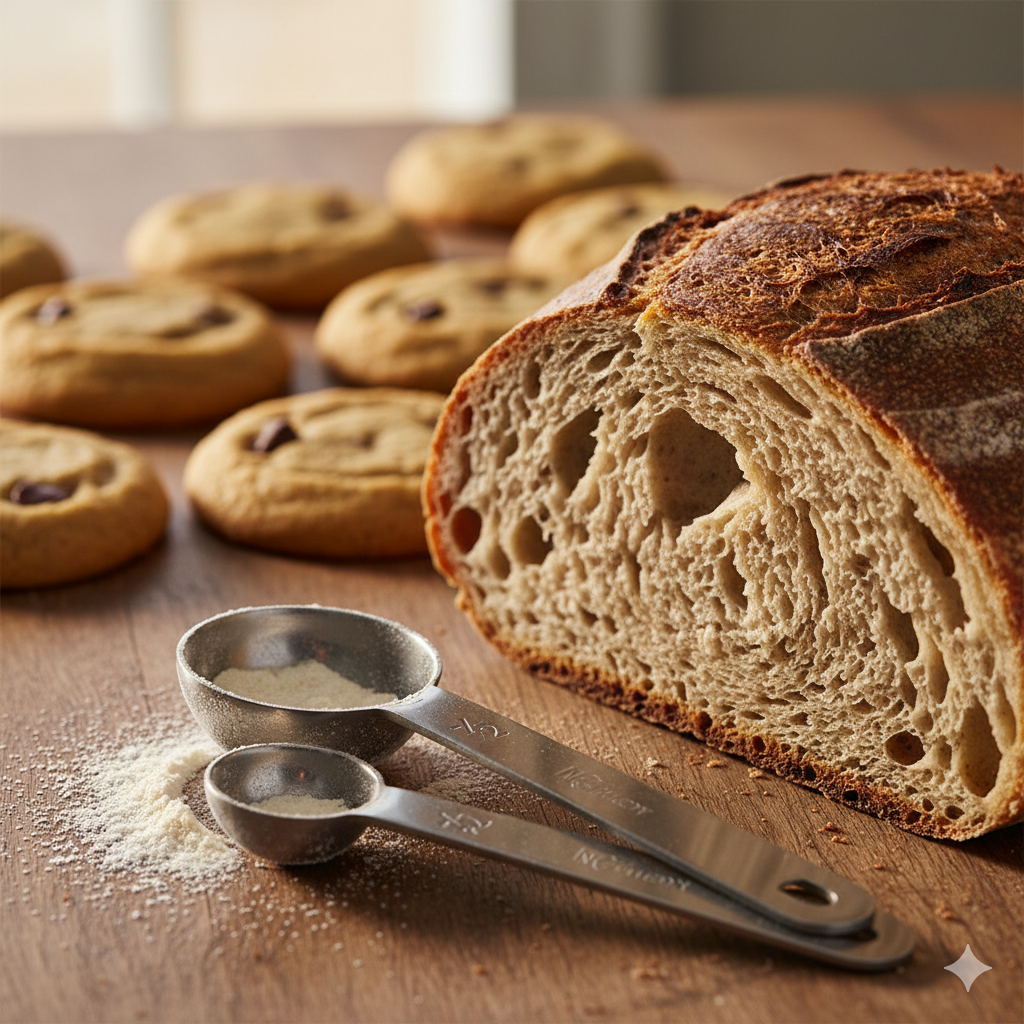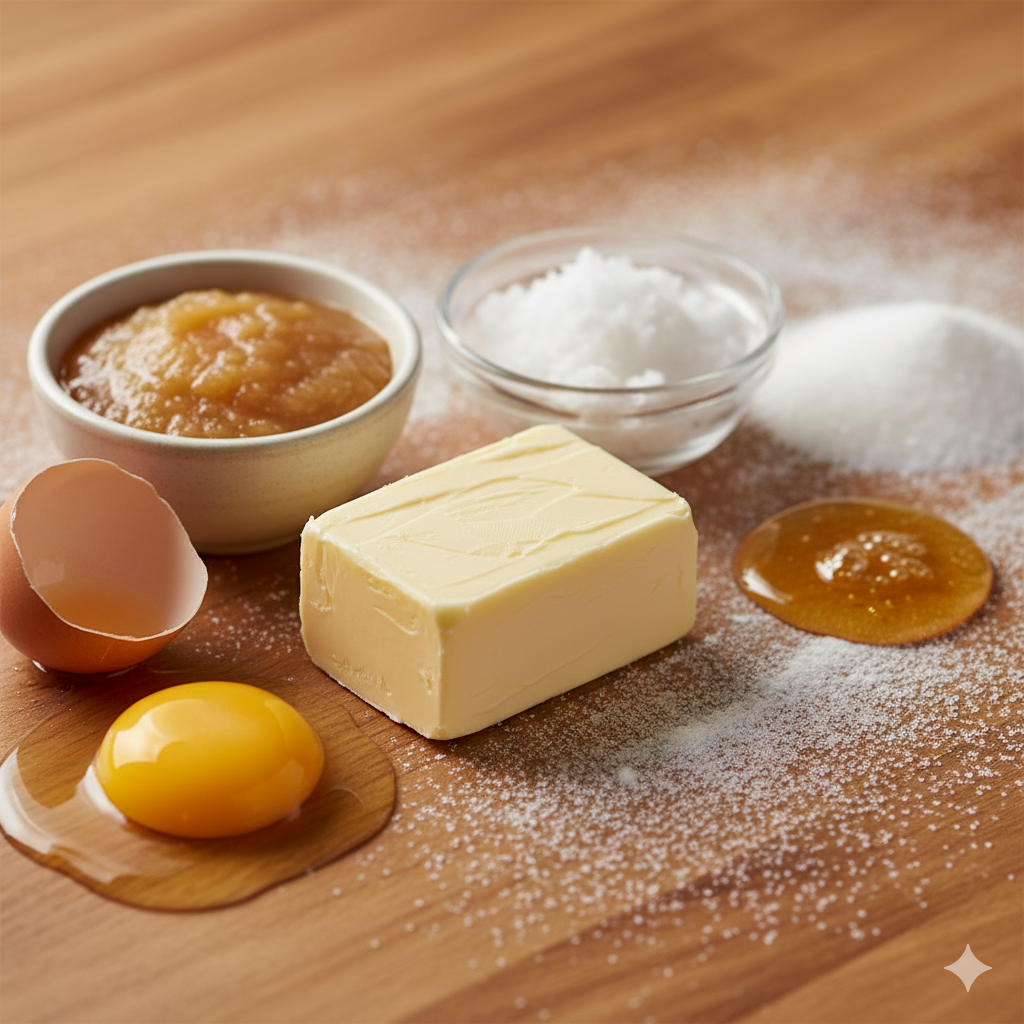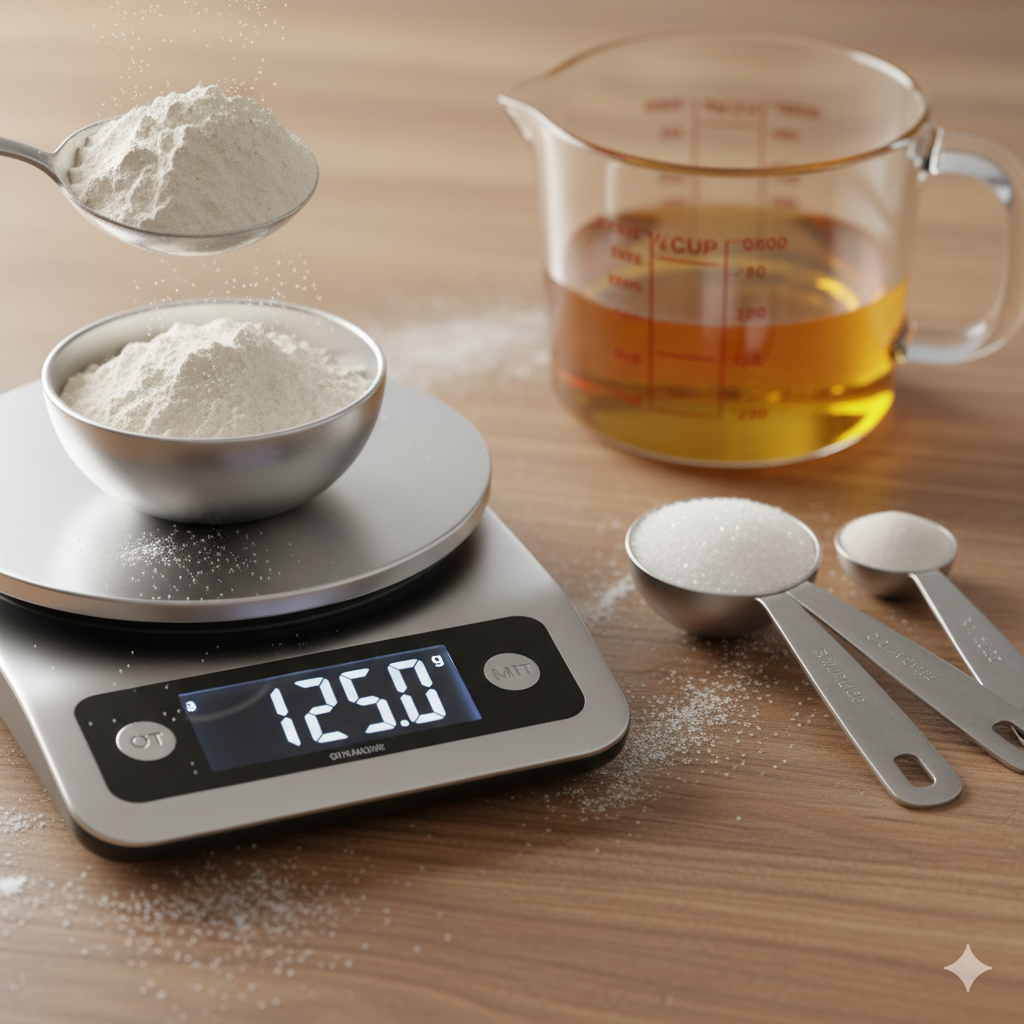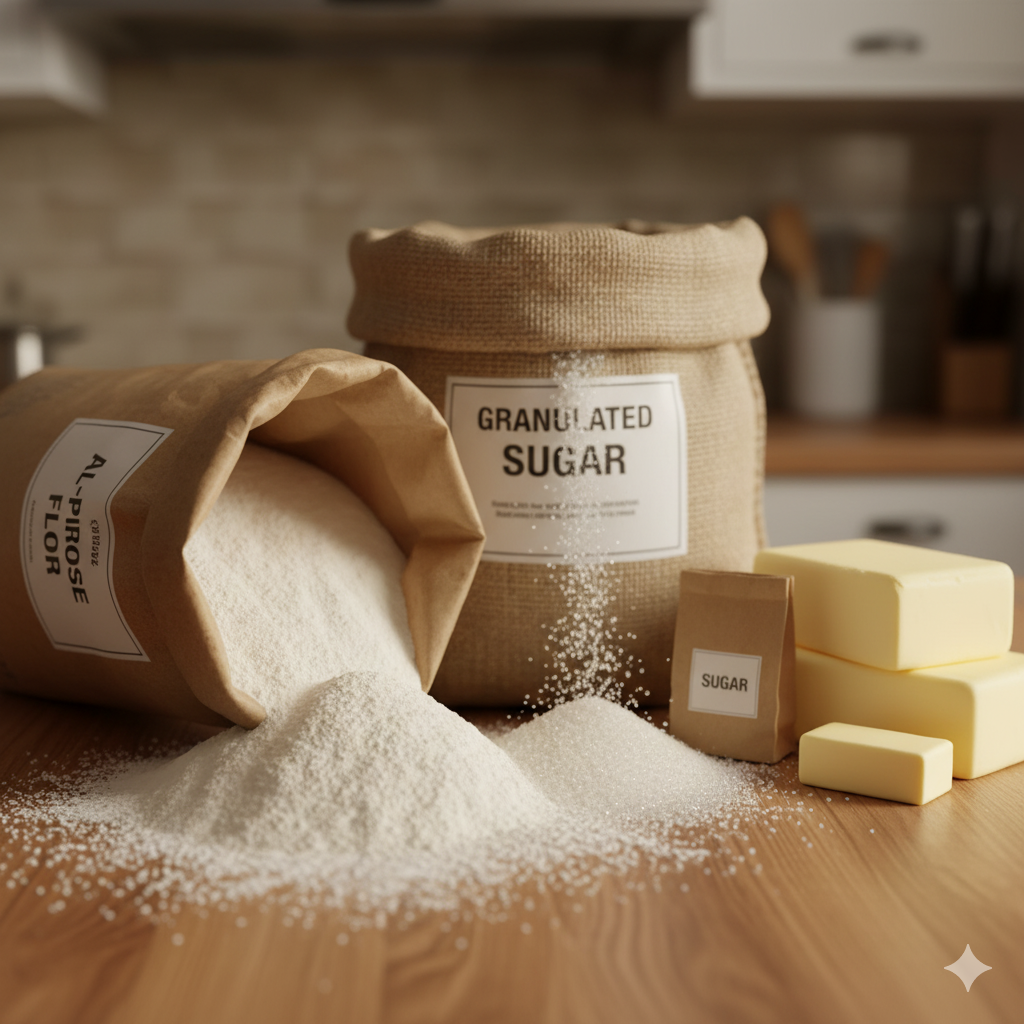How to Scale Recipes Up or Down Without Ruining Your Bakes
Have you ever doubled a cookie recipe only to end up with flat, spread-out cookies? Or tried to make a half-batch of bread that didn't rise properly? Recipe scaling isn't as simple as just multiplying ingredients. Here's what actually works based on kitchen testing and baking experience.
Not All Ingredients Scale Equally
Most ingredients like flour, sugar, and liquids scale perfectly when you double or halve a recipe. But some ingredients need special attention:
- Baking powder and baking soda: When doubling a recipe, use about 1.5 times the amount instead of 2 times. When halving, use slightly more than half. These leaveners work differently in larger or smaller batches.
- Salt and spices: Start with 1.5 times the amount when doubling, then adjust to taste. Our taste buds perceive flavors differently in larger quantities.
- Yeast: Scales evenly, but rising times might need adjustment. Smaller batches may rise faster, larger batches slower.
Pan Size Matters More Than You Think
Choosing the right pan size is crucial for successful scaling:
- Doubling a recipe? Don't just use a pan with double the measurements. A 9-inch round pan holds about 8 cups, while a 9x13-inch rectangular pan holds about 14-15 cups - perfect for most doubled recipes.
- Halving a recipe? Use smaller pans or adjust baking time. A loaf pan half-full will bake faster than a full one.
- Baking time changes: When doubling, increase baking time by about 25%, not 100%. Check for doneness 5-10 minutes before the original recipe suggests.
Mixing and Technique Adjustments
How you mix changes with batch size:
- Smaller batches: Can be over-mixed quickly. Mix just until combined.
- Larger batches: May need extra mixing to ensure even distribution, but be careful not to over-mix.
- Butter and sugar creaming: Takes longer in larger batches to properly incorporate air.
Calculator Tip:
Use our recipe calculator to see exactly how costs change when scaling recipes. You'll notice that larger batches often cost less per serving because you use ingredients more efficiently. Create a "base recipe" then make scaled versions to compare costs side-by-side.
Baker's Wisdom:
Always write down your scaling adjustments and results. What works for one recipe might need tweaking for another. Baking is both science and art - take notes and learn from each batch.
Sources: USDA National Nutrient Database standard weights, King Arthur Baking Company's Ingredient Weight Chart, and conversion principles from public domain culinary resources including the FDA Food Code guidelines for commercial baking operations.








